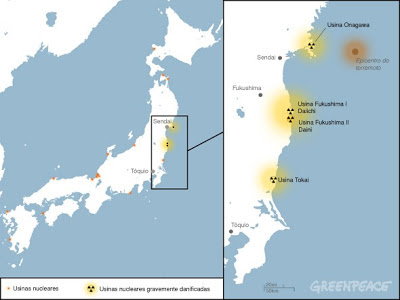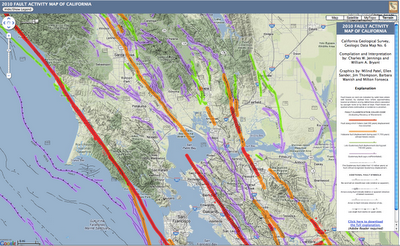by
KARL GROSSMAN
via @HuffPostGreen /
huffingtonpost.com
Fracking for gas not only uses toxic chemicals that can contaminate drinking water and groundwater -- it also releases substantial quantities of radioactive poison from the ground that will remain hot and deadly for thousands of years.
Issuing a report recently, exposing major radioactive impacts of hydraulic fracturing -- known as fracking -- was Grassroots Environmental Education, an organization in New York, where extensive fracking is proposed.
The Marcellus Shale region, which covers much of upstate New York, is seen as loaded with gas that can be released through the fracking process. It involves injecting fluid and chemicals under high pressure to fracture shale formations and release the gas captured in them.
But also released, notes the report, is radioactive material in the shale -- including Radium-226 with a half-life of 1,600 years. A half-life is how long it takes for a radioactive substance to lose half its radiation. It is multiplied by between 10 and 20 to determine the "hazardous lifetime" of a radioactive material, how long it takes for it to lose its radioactivity. Thus Radium-226 remains radioactive for between 16,000 and 32,000 years.
"Horizontal hydrofracking for natural gas in the Marcellus Shale region of New York State has the potential to result in the production of large amounts of waste materials containing Radium-226 and Radium-228 in both solid and liquid mediums," states the report by E. Ivan White. For 30 years he was a staff scientist for the Congressionally-chartered National Council on Radiation Protection.
"Importantly, the type of radioactive material found in the Marcellus Shale and brought to the surface by horizontal hydrofracking is the type that is particularly long-lived, and could easily bio-accumulate over time and deliver a dangerous radiation dose to potentially millions of people long after the drilling is over," the report goes on.
"Radioactivity in the environment, especially the presence of the known carcinogen radium, poses a potentially significant threat to human health," it says. "Therefore, any activity that has the potential to increase that exposure must be carefully analyzed prior to its commencement so that the risks can be fully understood."
The report lays out "potential pathways of the radiation" through the air, water and soil. Through soil it would get into crops and animals eaten by people.
Examined in the report are a 1999 study done by the New York State Department of Environmental Conservation "assisted by representatives from 16 oil and gas companies" on hydrofracking and radioactivity and a 2011 Environmental Impact Statement the agency did on the issue. It says both present a "cavalier attitude toward human exposure to radioactive material."
Radium causes cancer in people largely because it is treated as calcium by the body and becomes deposited in bones. It can mutate bones cells causing cancer and also impact on bone marrow. It can cause aplastic anemia -- an inability of bone marrow to produce sufficient new cells to replenish blood cells. Marie Curie, who discovered radium in 1893 and felt comfortable physically handling it, died of aplastic anemia.
Once radium was used in self-luminous paint for watch dials and even as an additive in products such as toothpaste and hair creams for purported "curative powers."
There are "no specific treatments for radium poisoning," advises the Delaware Health and Social Services Division of Public Health in its information sheet on radium. When first discovered, "no one knew that it was dangerous," it mentions.
White's report, entitled "Consideration of Radiation in Hazardous Waste Produced from Horizontal Hydrofracking," notes that "radioactive materials and chemical wastes do not just go away when they are released into the environment. They remain active and potentially lethal, and can show up years later in unexpected places. They bio-accumulate in the food chain, eventually reaching humans."
Under the fracking plan for New York State, "there are insufficient precautions for monitoring potential pathways or to even know what is being released into the environment," it states.
The Department of Environmental Conservation "has not proposed sufficient regulations for tracking radioactive waste from horizontal hydrofracking," it says. "Neither New York State nor the Nuclear Regulatory Commission would permit a nuclear power plant to handle radioactive material in this manner."
Doug Wood, associate director of Grassroots Environmental Education, which is based in Port Washington, N.Y., and also editor of the report, commented as it was issued:
"Once radioactive material comes out of the ground along with the gas, the problem is what to do with it. The radioactivity lasts for thousands of years, and it is virtually impossible to eliminate or mitigate. Sooner or later, it's going to end up in our environment and eventually our food chain. It's a problem with no good solution -- and the DEC is unequipped to handle it."
As for "various disposal methods.. .contemplated" by the agency "for the thousands of tons of radioactive waste expected to be produced by fracking," Wood said that:
"none...adequately protect New Yorkers from eventual exposure to this radioactive material. Spread it on the ground and it will become airborne with dust or wash off into surface waters; dilute it before discharge into rivers and it will raise radiation levels in those rivers for everyone downstream; bury it underground and it will eventually find its way into someone's drinking water. No matter how hard you try, you can't put the radioactive genie back into the bottle."
Furthermore, said Wood in an interview, in releasing radioactive radium from the ground, "a terrible burden would be placed on everybody that comes after us. As a moral issue, we must not burden future generations with this. We must say no to fracking -- and implement the use of sustainable forms of energy that don't kill."
The prospects of unleashing, through fracking, radium, a silvery-white metal, has a parallel in the mining of uranium on the Navajo Nation.
The mining began on the Navajo Nation, which encompasses parts of Arizona, New Mexico and Utah, during World War II as the Manhattan Project, the American crash program to build atomic weapons, sought uranium to fuel them. The Navajos weren't told that mining the uranium, yellow in color, could lead to lung cancer. And lung cancer became epidemic among the miners and then spread across the Navajo Nation from piles of contaminated uranium tailings and other remnants of the mining.
The Navajos gave the uranium a name: "leetso," which literally means "yellow earth" and connotes "monster."
Left in the ground, it would do no harm. But taken from the earth, it has caused disease. That is why the Navajo Nation outlawed uranium mining in 2005. "This legislation just chopped the legs off the uranium monster," Norman Brown, a Navajo leader, said.
Similarly, radium, a silvery-white monster, must be left in the earth, not unleashed with fracking to inflict disease on people today and many, many generations into the future.
Karl Grossman: Fracking and Radium, the Silvery-White Monster





















































